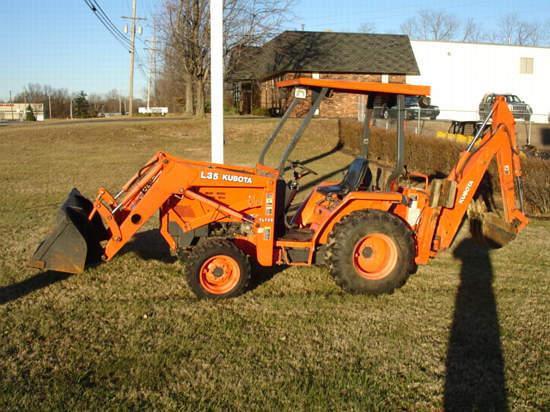We genuinely care about
our customers' satisfaction
C&B Drainage Systems
Call Us At: 803-806-8453 Columbia
803-530-9868 Cell
In loving memory of Claude "Big Daddy" and Sybil "Big Mama" Dreher
New Installations
C&B Drainage Systems Services
Repairs to Existing Systems
Septic System Evaluations (septic letters)
A new septic system for most homes or businesses, will require a 1000 gallon septic tank with an attached drain field. The actual size of the septic tank and length of the drainage trenches varies, and is determined by your local health department when the permit to construct is issued. There are a number of things your heath department representative takes into consideration when issuing a permit: size of building and lot, soil density, proximity to lakes, rivers and streams, and seasonal ground water levels. If you need assistance in getting the proper paper work in order prior to construction, Mr. Nance will be happy to assist you.
At C&B Drainage, we take care to provide our customers with reliable and lasting sewer and septic drainage systems. We are available to take your call from 5:00 am - 10:00 pm, Monday through Saturday, Sunday 1:00 pm - 10:00 pm. All estimates and advice are gladly given free of charge.
We provide a variety of septic and plumbing services including:
A septic system is technically called an on site wastewater treatment facility. It is a reliable and sanitary means of recycling wastewater back into the environment. When a system fails, it is usually because the drain line is over loaded with more water than the soil can absorb, or because the tiny openings in the soil have become clogged with particles from the septic tank. Many soil types are poorly suited for septic systems because water is not absorbed very quickly. We are the proven experts in our industry when it comes to repairs or extensions to existing septic trenches.
If you are purchasing an existing home, there is a period of time (10 days) after you have reached an agreement with the current owner to get all your home inspections done. You want to be sure you have no termite infestations, that the HVAC system works, and by all means you should have the septic system inspected. This involves opening the septic tank to check for structural issues, and probing the drain lines to check for excessive moisture. We also inspect pumbing in the crawlspace. I encourage all buyers to be present during this inspection; it is most educational. The whole process takes about one to two hours to complete. If you did not have your septic system inspected before closing on your home, or if at any time you have a concern, please make an appointment with Chris to have it done.
If you have a question concerning any of our septic, plumbing, or moisture control services please call me: Chris Nance 803-806-8453 Columbia - 803-438-6130 Camden - 803-530-9868 cell Or fill out your contact information in the box provided with your specific request.
French Drain Systems
Often times we find foundations and crawl spaces that are inundated in water. When the ground is exposed to water, whether it is spring fed or from heavy rain or even irrigation systems, affected areas can become saturated, inviting a range of problems from uneven foundation settling to unwanted pests. A properly installed French drain will intercept ground water and channel it away from your home or structure before trouble can start. Each system we install is specifically designed to address the unique water problem around your home or other structure.
Many older homes have cast iron and clay (terra cotta) sewer mains or septic tank inlet lines. These older lines usually have no way of accessing the pipe with a "snake" to clear the line. In the first two photos, an inlet line has been broken into to create such an access. Once the blockage has been dealt with, the hole is then covered with whatever the guys have on hand, and forgotton until next time. Needless to say this is substandard practice which creates as many problems as it solves. The third photo shows installed a new inlet line extending into the septic tank, and sealed with hydrolic cement. A clean-out has also been installed.
In the past I have had a preference for the old fashion gravel trenches, particularly in very loose sandy soils. However in the last years, a product has been deveoped and improved upon that has won my vote of confidence, it is: The Infitrator Chamber System. Infiltrator chambers are hollow structures that attach end-to-end. They are installed in trenches or beds without gravel. The entire bottom of the trench is open for unobstructed infiltration of water. The large storage volume within the hollow chambers accommodates peak flows of effluent from the home. Infiltrator chambers also feature patented sidewall louvers that allow lateral leaching of effluent into the soil.
Recent Projects
In Elgin, SC
In Columbia, SC
In Columbia, SC
This family initially called us about having their septic tank pumped. When it was reported that sewage was flowing from the top of the tank, we knew the problem was related to the drain lines, and that pumping alone was not going to solve the problem.
This septic tank was pumped on a Friday; the photograph was taken on the Monday following. The tank is already over half filled. The most common misconception about septic tanks is that it takes weeks, months, or even years for them to fill up with water. It usually takes four days to one week.
Fortunately we have plenty of room for expansion. In this grassy area we will install 100 feet of infiltrator in two trenches. The new lines will be an addition to an existing drain line that has not been able to keep up with the daily flow from this family of five.
Looking down each trench
The drain lines and septic tank connections are 3 inch schedule 40 (thick wall) pvc. The tank connect is sealed with hydrolic cement.
A new outlet was created. Some times it is better to leave the old lines completely unmolested.
A distressed female voice on the phone exclaims, "A huge hole with water in it has opened in my back yard!"
The walls of this tank have crumbled causing the top to fall in. Older tanks often have tops that were poured in place. In the photos you can see the form boards that have fallen into the tank along with the top.
This is a very dangerous situation.
A hole adjacent to the old tank is excavated, and a new tank is set in place.
The sewer inlet main is redirected and connection to the drain field established.
Fill in the old tank.
Grading and compacting.
Done.
Here we have another old septic system. The tank has not yet collapsed, but when the system was last pumped we could see that structural failure was in the making.
From the surface there seems to be no problem.
With a little bump with the backhoe bucket, this tank gives way. This septic tank, by the way, is too close to the house by today's standards.
A hole is dug and a new tank set
The existing drain field is replaced
In Lugoff, SC
Water is backing up in the downstairs bathroom, and the plumber said, "Your tank is full." Well maybe so, but water backing up into the bathroom drains is evidence of a clogged sewer main.
After a little digging, we discover, once again, where holes have been punched into the inlet line so that a "snake" could be run through to break up a clog. This pipe had literally collapsed and was blocked by soil intrusion.
This older style pipe, very commonly used in the 1950's and 60's is called "Orangeburg" pipe, named so for its place of manufacture, Orangeburg, NY. It has the appearance of a cardboard tube that has been soaked in creosote.
A new line from house to tank, complete with a clean-out plug, restores flow continuity.
The plumber guessed right that the tank was full. The rough surface is floating scum, and the sludge depth (not visible) was exceeding three feet.
Back fill and it's all just a bad memory.
In Camden, SC
This vintage 1950's tank is on the verge of total disintegration . My guess is that roots growing through the walls are holding this tank together.
The hole is dug; a new tank set. This behomoth weighs 4 tons.
The drain field has its problems with roots as well.
A new drainage trench is prepared, staying at least 75 feet from the lake
Connections made and secured
Back fill
Now it's time to go fishing.
In Lugoff and Elgin, SC
We were called to inspect two septic systems, one in Elgin and the other in Lugoff. These septic tanks are the same age, and have been in use by the same number of people. One tank is mostly liquid while the other is beginning to clog with solid wastes. Why the difference?
Check out my feature article "Getting to Know Your Septic System" for the answer.


